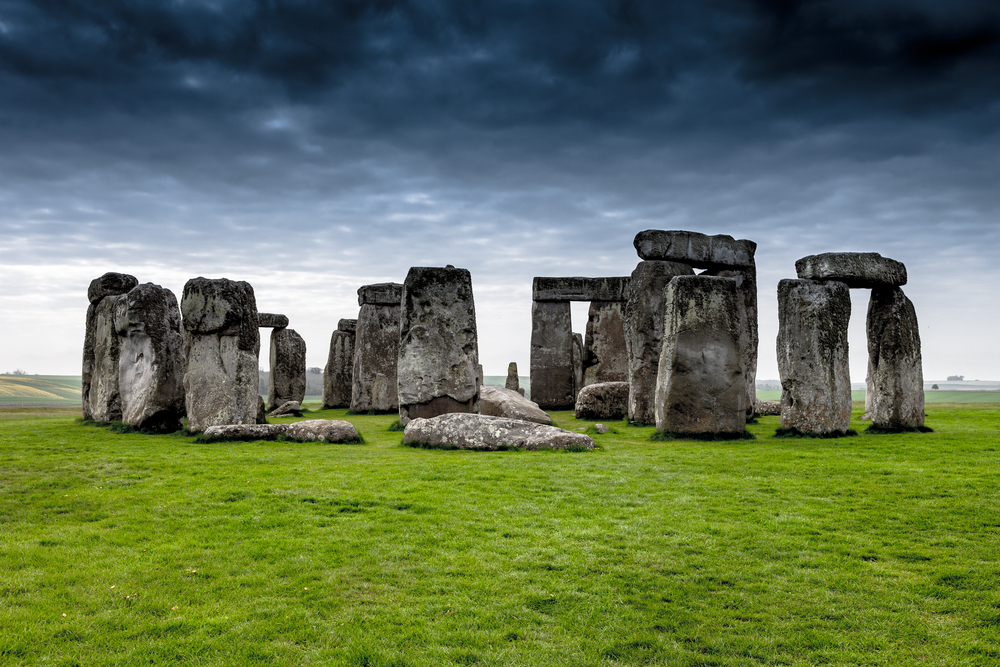
The ancient builders of Stonehenge may have hosted massive barbecue cookouts where thousands of revelers feasted on meat, new research suggests.
Archaeologists at the Neolithic settlement of Durrington Walls in modern-day southern England, where the builders of Stonehenge likely lived, found evidence that the village hosted open-air meat-roasting parties 4,500 years ago, with animals likely walking to the site for slaughter from regions far and wide.
At the time, thousands of ancient pilgrims may have flocked to the site of Stonehenge to honor their dead, while heading back after hours to party and grill at Durrington Walls, the study authors speculated. [In Photos: A Walk Through Stonehenge]
"This is all about conspicuous consumption," said study co-author Oliver Craig, an archaeologist at the University of York in England.
Stonehenge mystery
The megaliths of Stonehenge were erected between 5,000 and 4,000 years ago on the Salisbury Plain in England. Exactly why the sacred monument was erected, and who erected it, has baffled historians for centuries. The mysterious monument was part of a larger landscape that people had considered sacred for thousands of years, and some experts have proposed that the monument was built because the area was once a sacred hunting ground. Some historians have argued that it was an ancient sundial, part of a ceremonial processional route, or even a sound illusion.
Over the course of nearly a millennium, people progressively added to the structure, with different sizes and types of stones. The biggest stones, called sarsens, are up to 30 feet (9 meters) tall and were likely brought from miles away. [Megalithic Mysteries: Test Your Stonehenge Smarts]
Sign up for the Live Science daily newsletter now
Get the world’s most fascinating discoveries delivered straight to your inbox.
Many archaeologists believe the Stonehenge builders lived just a few miles away at a settlement called Durrington Walls, which now includes a wooden henge, or timber circle, which was first excavated in 1966. The wooden-henge site was likely connected to Stonehenge via a network of dirt roads and a short stretch of the Avon River, archaeologists have proposed. Researchers have also unearthed partially worked sarsen stones at Durrington Walls that are similar to those at Stonehenge. What's more, the village occupation overlaps with the time period when the sarsen circle was raised.
"The dates are absolutely bang-on," Craig said. "It's exactly the same time when the monument was being built."
But exactly how the builders of Stonehenge lived remains unclear.
Grilling out
In recent years, archaeologists excavating at Durrington Walls have unearthed evidence of habitation, including the floors of at least seven houses, though archaeologists suspect the village once contained up to 200 houses, Craig said. Unlike Stonehenge, where many people were buried but no one lived, the village at Durrington Walls had no sign of persistent funeral practices.
Instead, the site contains a trove of pottery shards and pits filled with animal bones, suggestive of feasting, the researchers wrote in the October issue of the journal Antiquity.
To get a better picture of Neolithic life in this little village, the team analyzed the chemical composition of fats clinging to the pottery vessels in both the inhabited areas and the ceremonial wooden-henge parts of the complex. Those items found in habitation areas contained mostly animal fats, strengthening the notion that the village hosted ancient barbecue cookouts as a centerpiece of feasting. Meanwhile, the ritual spaces had chemical traces of milk or other dairy products, which may have been ceremonial offerings.
"Given the role of milk in so many cultures around the world as a symbol of purity and as a symbolic link between spiritual and earthly nourishment, it is perhaps no great surprise that such remains were deposited in front of this great timber circle," the authors wrote in the paper.
The team also analyzed the assemblage of animal bones found at the site. Because every part of the animal was found at the site, the team concluded that the Stonehenge builders walked the animals from off-site locations and slaughtered them on the premises. Based on the isotopes (versions of atoms with different atomic weights), the team concluded that some of the animals came from far away, which would have required a highly organized operation.
The new finds suggest the builders of Stonehenge lived in a well-organized village with a sophisticated culinary system.
Craig suspects both Stonehenge and Durrington Walls were linked through a combination of religious ritual and sacred feasting.
"At certain times of the year — probably winter — thousands more people descended on the site from all around Britain to use the monumental spaces, perhaps bury their dead or do a ceremony that represent the dead or praise the dead somehow at Stonehenge," Craig said. "But they were undergoing feasting activities at Durrington Walls."
Follow Tia Ghose on Twitterand Google+. Follow Live Science @livescience, Facebook & Google+. Original article on Live Science.

Tia is the managing editor and was previously a senior writer for Live Science. Her work has appeared in Scientific American, Wired.com and other outlets. She holds a master's degree in bioengineering from the University of Washington, a graduate certificate in science writing from UC Santa Cruz and a bachelor's degree in mechanical engineering from the University of Texas at Austin. Tia was part of a team at the Milwaukee Journal Sentinel that published the Empty Cradles series on preterm births, which won multiple awards, including the 2012 Casey Medal for Meritorious Journalism.










